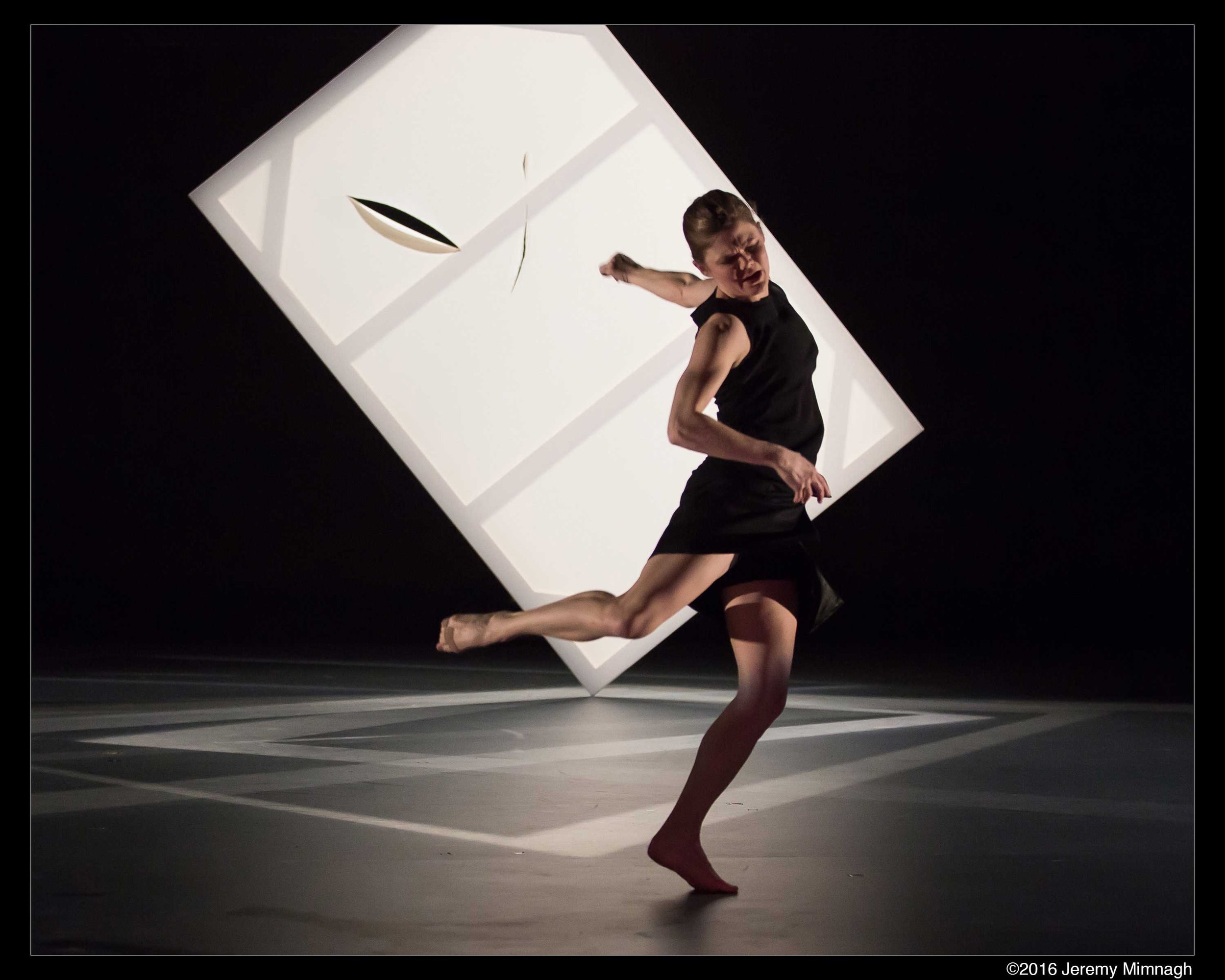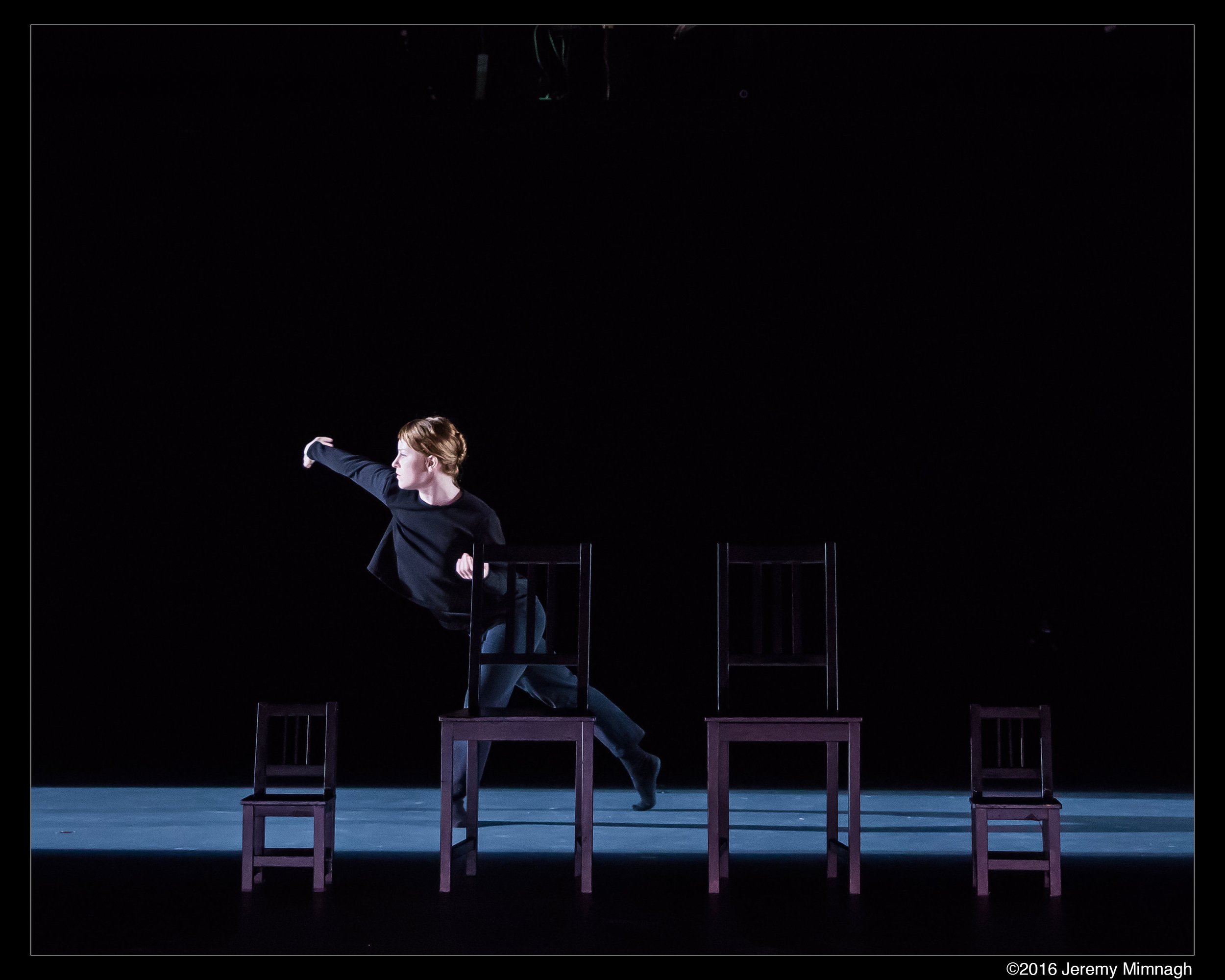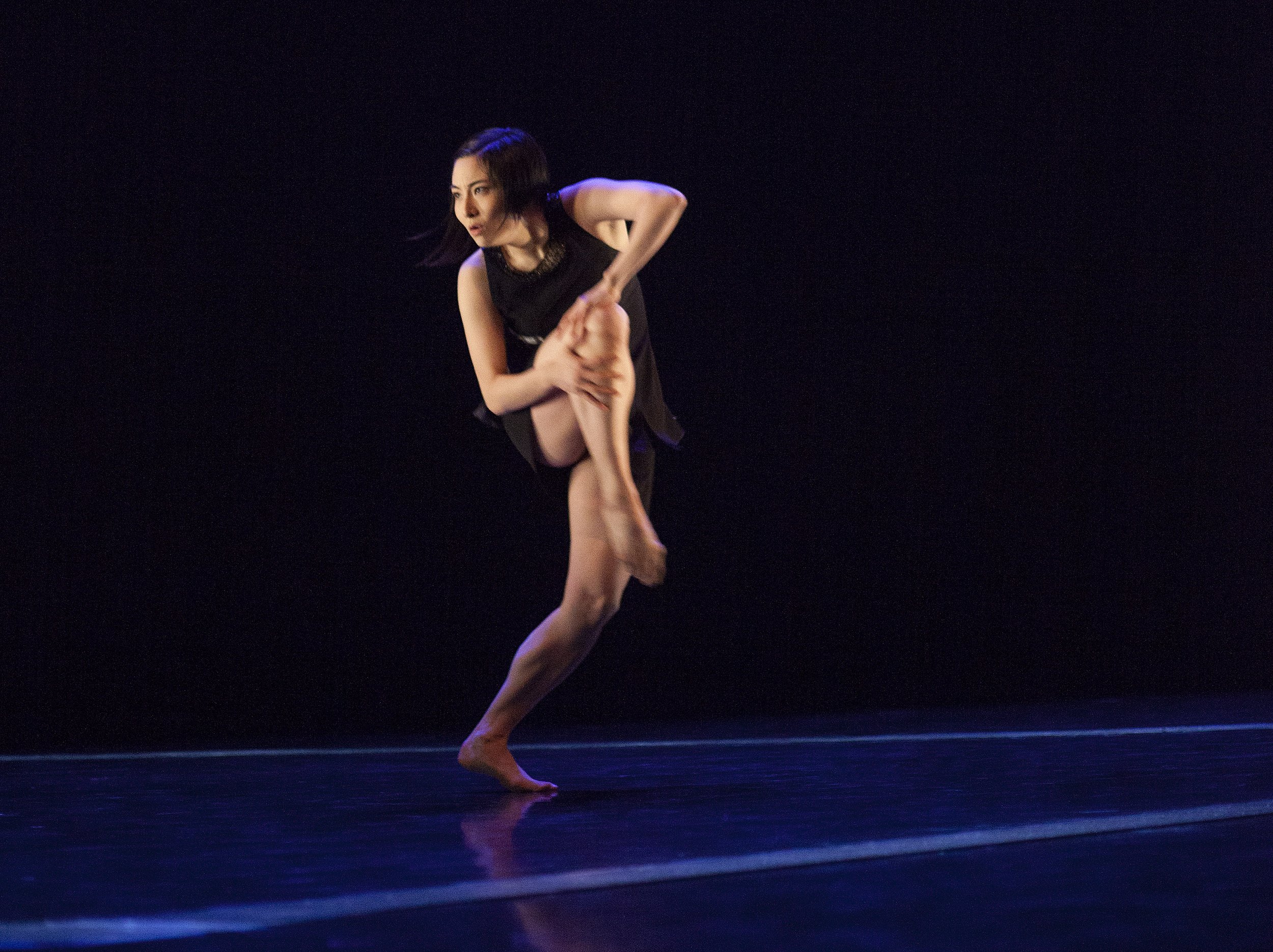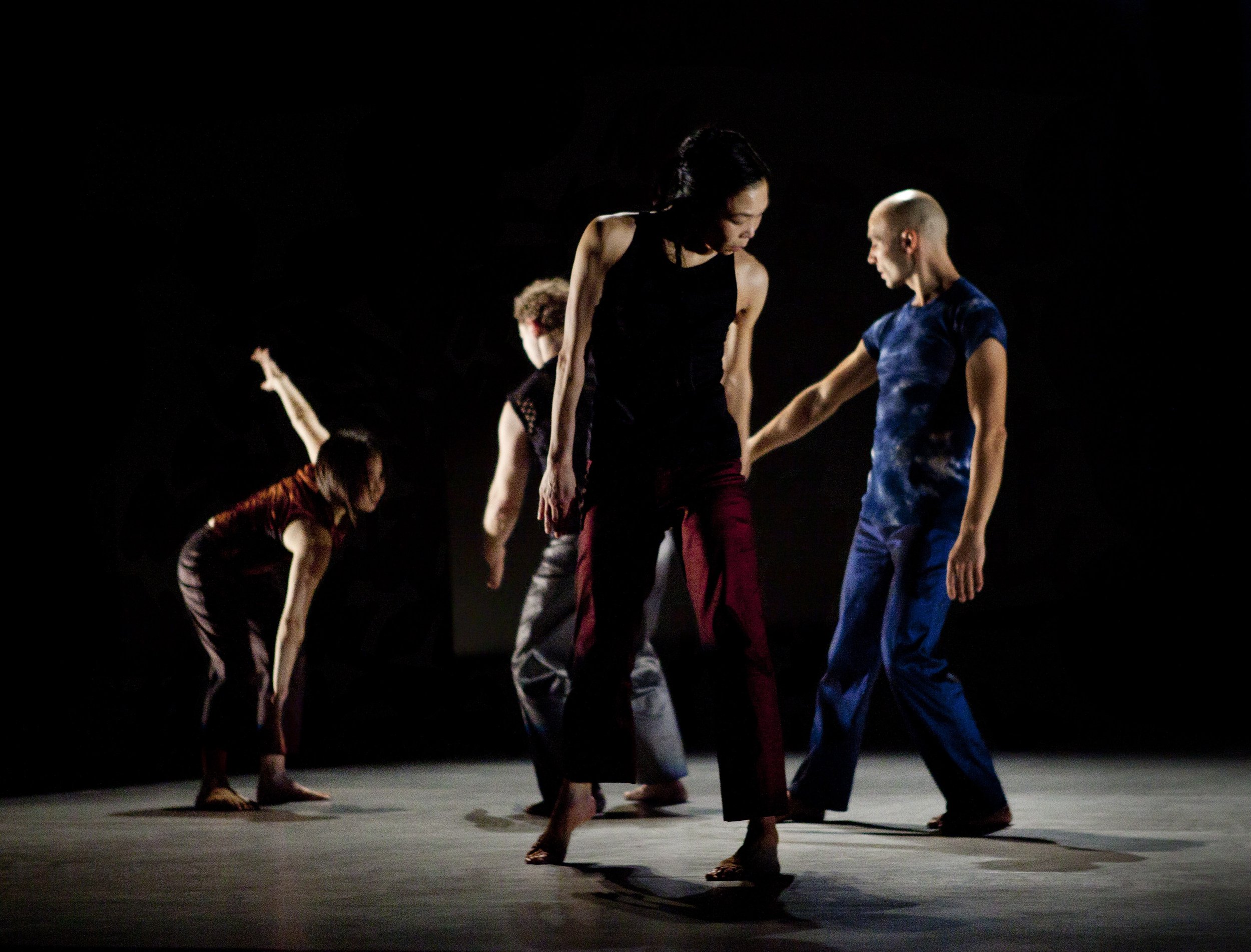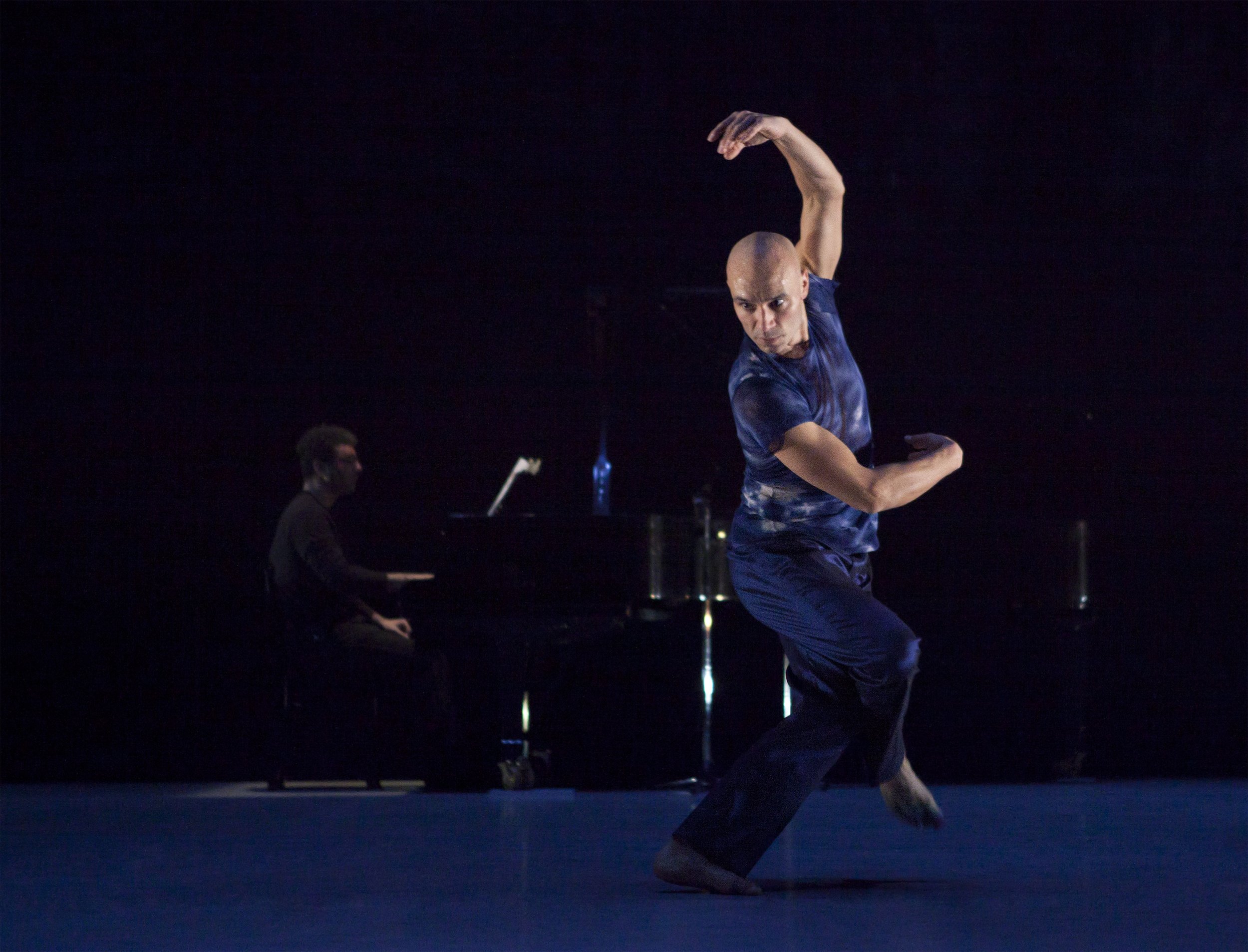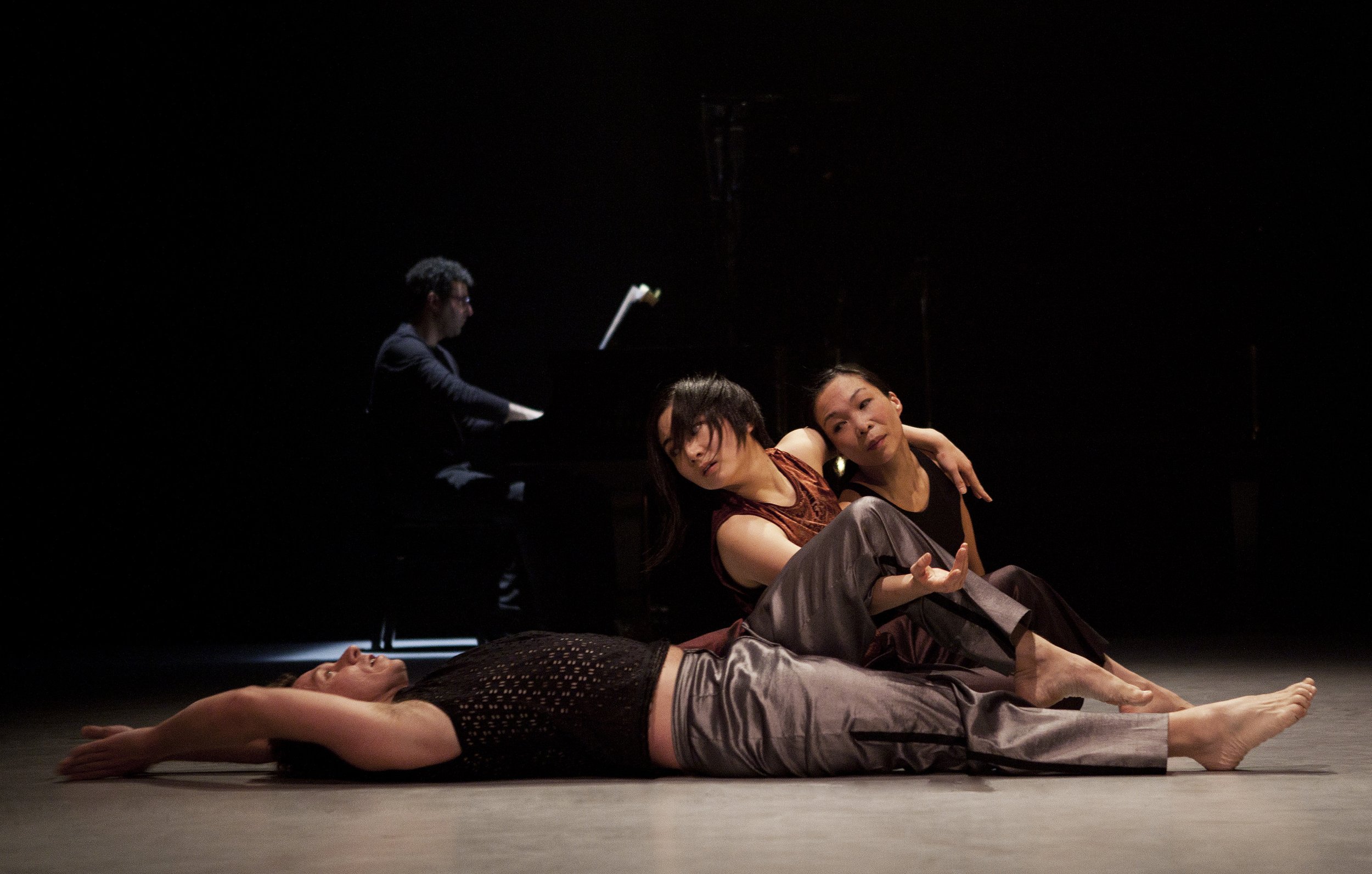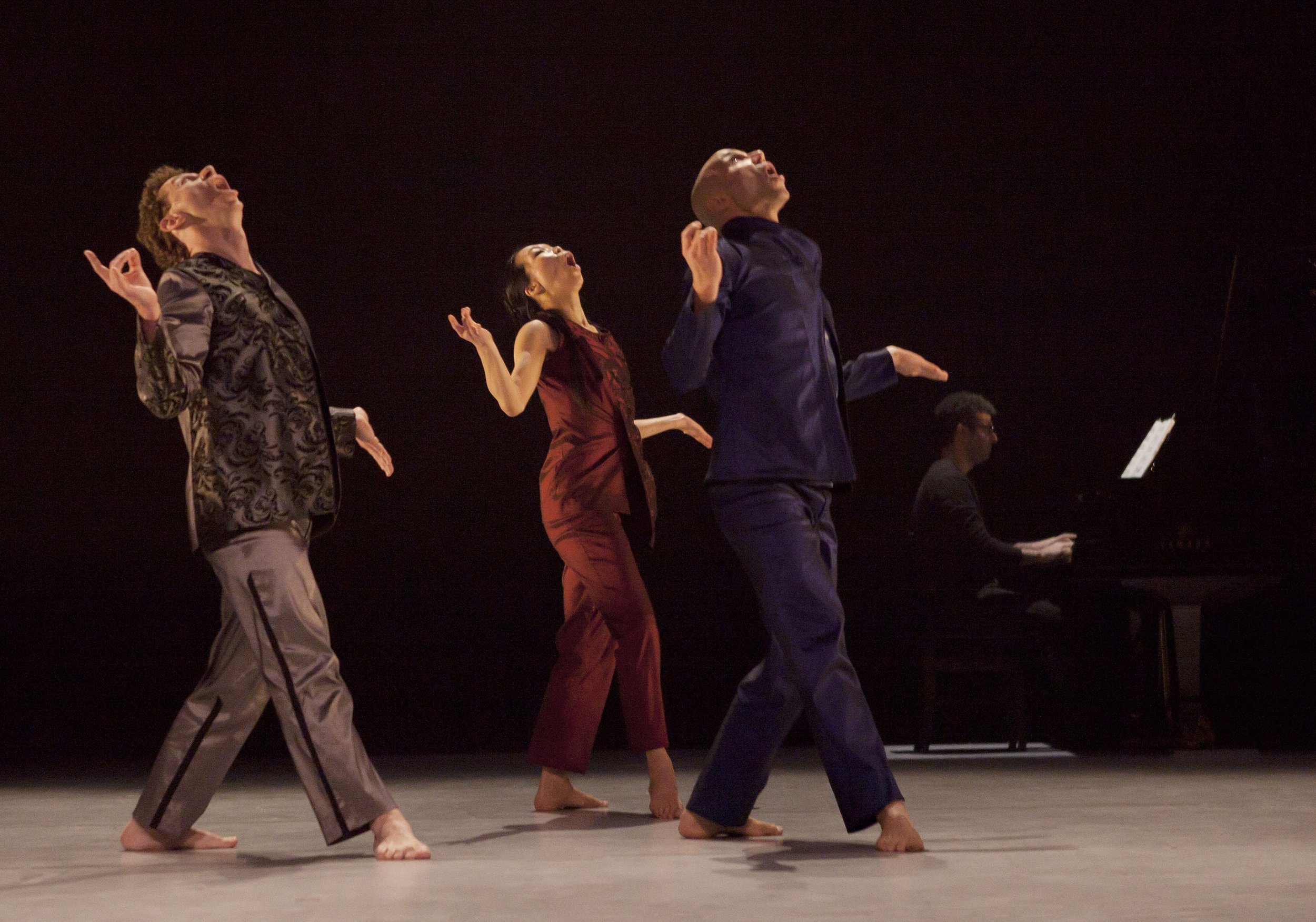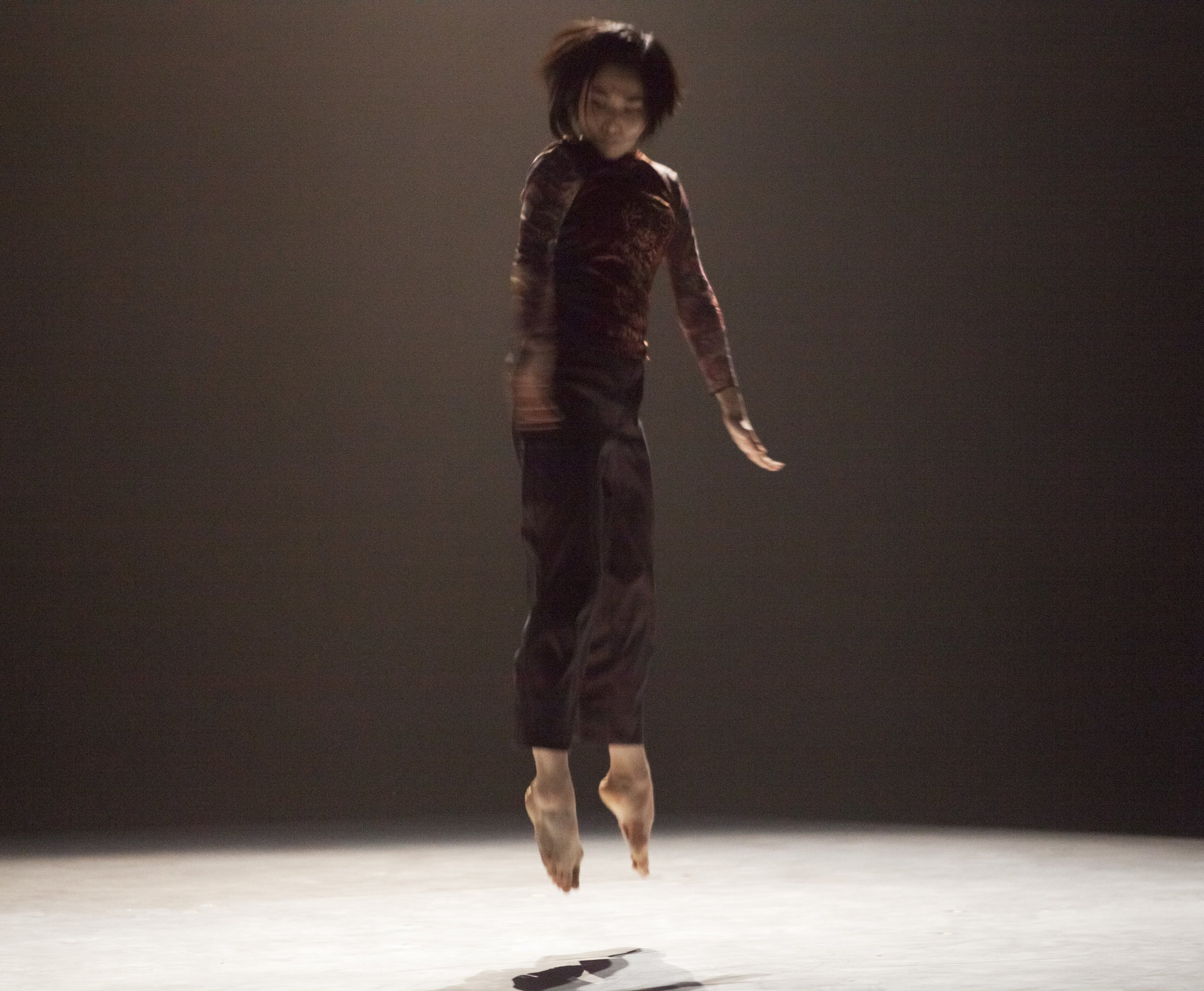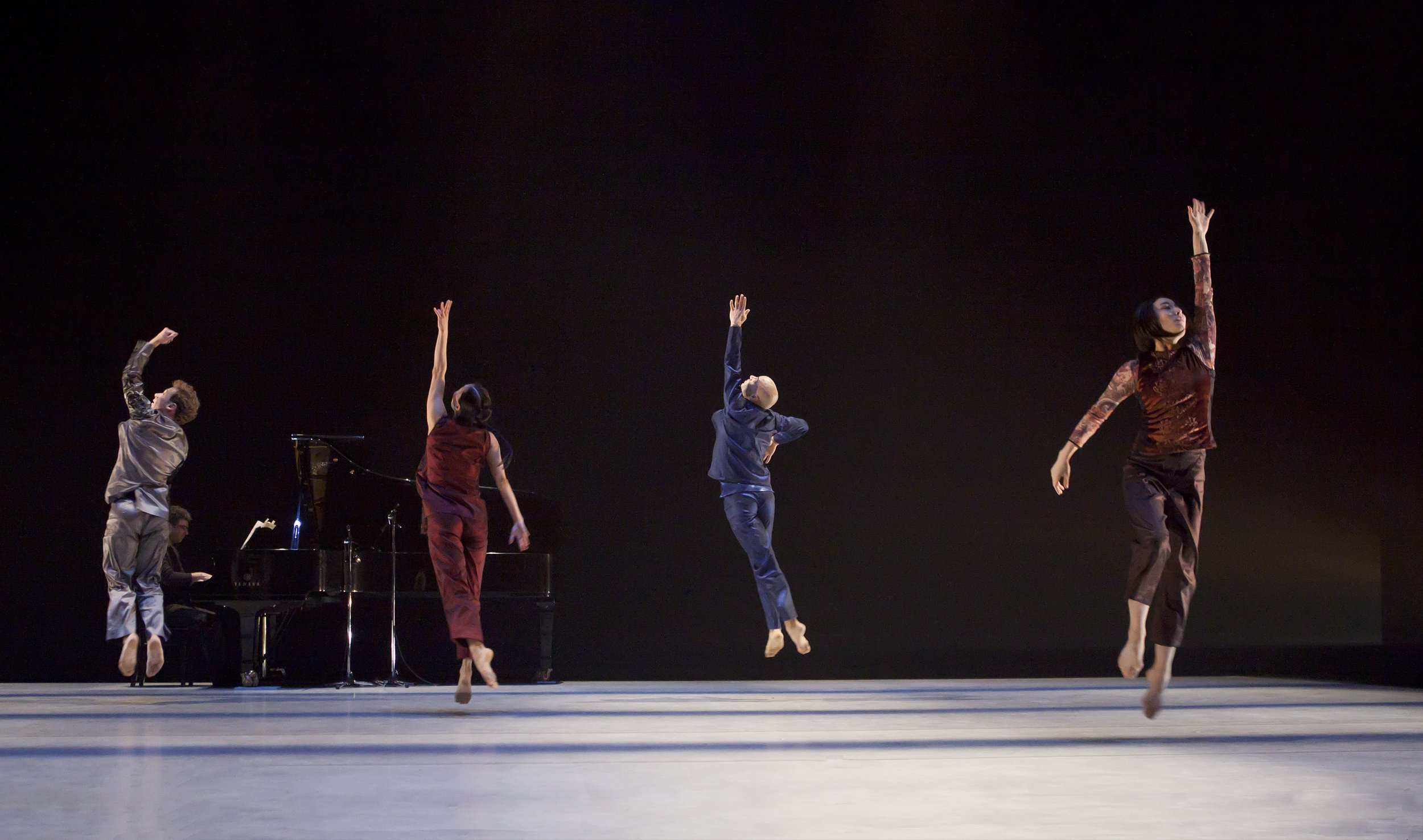Aleatoric Solo No. 2 (2016)
/This week we reach the final piece in Peggy’s Aleatoric series, instigated way back in 2010 with the original Aleatoria installation created for Nuit Blanche. Peggy writes about this final work in the series:
In 2015, I made an unforgettable trip to Japan with the dancer Sahara Morimoto, who was at that time the Artistic Associate with my company. We had been invited by Helen Price to teach a week-long workshop for the Yokohama Ballet Academy, and we made it the centrepiece of a 3-week adventure that began in Kyoto and finished in Tokyo. At the Yokohama Museum of Art, we saw a spectacular retrospective exhibition of work by Takashi Ishida, and I was especially struck by a massive canvas that stood tipped up on its corner in the centre of a gallery. This canvas had been painted on over and over again in successive iterations. It had been gashed. It had light projecting onto it. It was an object, and an artifact of its making. It also presented an environment into which one entered. It was a performance.
The memory of my encounter with Ishida’s installation continued to work on me, and at some point I imagined the blank canvas with which he had begun. I thought about myself beginning a new work and my sense that I can never begin with a blank slate, an empty canvas, a tabula rasa. Rather, I have a sense that my fallibility, my flaws and inadequacies, the complexities of my history as both a person and an artist, mean that the “canvas” upon which I am working is already marred, marked, damaged. And so I took this idea of a “damaged canvas” as the central metaphor for my final aleatoric dance, a solo for the magnificent Kate Holden.
With a huge unpainted canvas ripped open with a long slash and tipped on its corner centre stage, Kate inhabited a world of light and shadow, transparency and opacity, within which she embodied prowess, vulnerability, fear, elation, fatigue, angst, and courage.
Her heroic solo – hugely demanding physically and vocally – closed the four-part program Phase Space. Composing each of those works was deeply fascinating for me as a choreographer, but my ambition with them was to create dances that possessed striking and unique identities that transcended the methods, mechanics, and mysteries of making them. The iconic American choreographer Merce Cunningham spoke eloquently on this point in relation to his own work: “Even with all this preparation, however complex it is, if it doesn’t become dance, then it’s meaningless.”
The concert in which this work featured, Phase Space, was honoured with a Dora Mavor Moore Award for Outstanding Sound Design for John Kameel Farah and Fides Krucker.


